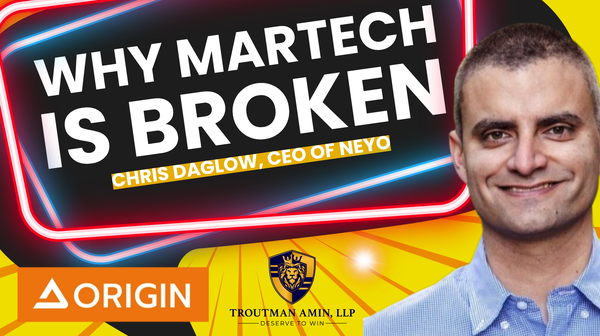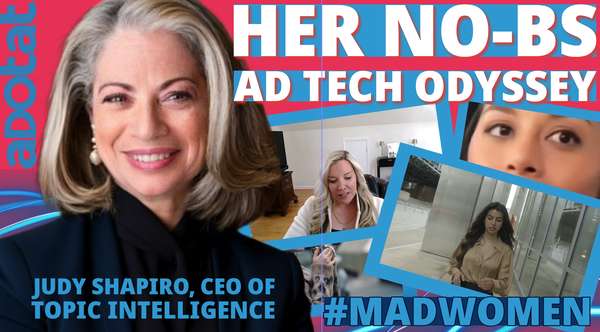The Battle Begins: Walmart and Vizio Take on Amazon
Vizio and Walmart's union isn't just another deal; it’s a full-scale strategic assault aimed at Amazon's ad empire. Imagine Walmart, the heavyweight champion of rolling back prices and
gobbling up market share, stepping into the ring with Vizio, the scrappy smart TV contender that has already proven its mettle in the world of ad-supported streaming. This $2.3 billion acquisition isn't some polite handshake—it’s a flaming haymaker aimed right at Amazon’s jugular. Seth Dallaire, Walmart’s EVP and Chief Revenue Officer, made the stakes clear: “We believe the combination of these two businesses would be impactful as we redefine the intersection of retail and entertainment." This
move isn't about selling more budget TVs; it's about creating a formidable advertising ecosystem that can rival Amazon’s iron grip on retail media.
Walmart's strategy here is far more sophisticated than merely beefing up their electronics department. They're not just acquiring a smart TV manufacturer; they're laying the groundwork for a massive, data-driven advertising machine. This isn't just about getting TVs into more living rooms—it's about getting ads into
those living rooms in a way that’s tailored, targeted, and terrifyingly effective. Dallaire’s comments underline Walmart’s ambition to turn Walmart Connect, their burgeoning ad network, into a true contender against Amazon’s dominant platform. By integrating Vizio’s SmartCast operating system, Walmart is not just entering the advertising ring—they’re throwing the first punch in what could be a very bloody battle.
The potential impact of this move extends far beyond
the traditional retail space. Walmart isn’t just looking to sell you a TV; they want to know what you watch on it, when you watch it, and how to make sure their ads are the ones you see. This kind of deep integration between retail and media is something Amazon has been capitalizing on for years with its Fire TV platform. Walmart, by acquiring Vizio, is signaling that they’re not content to let Amazon dominate this space uncontested. As Dallaire put it, Walmart and Vizio together “redefine the
intersection of retail and entertainment”—a phrase that should send shivers down the spines of every competitor in the market.
Transforming Walmart Connect: A New Advertising Powerhouse
At its core, this acquisition is Walmart's attempt to transform Walmart Connect, their growing media business, into a serious contender against Amazon’s massive ad network. Think of it as David arming himself with more than just a stone; he’s building a fortress of consumer
data and viewer insights. Vizio, a smart TV manufacturer with over 18 million active users and a growing number of direct advertiser relationships (over 500, to be precise), offers Walmart a golden opportunity to combine their retail heft with a vast digital footprint. “We are really excited about the opportunity to bring together Vizio’s operating system with our ad platform,” said Doug McMillon, Walmart's CEO (Stream TV Insider).
The sheer scale of Walmart’s
retail operation combined with Vizio’s sophisticated ad technology could create a juggernaut that would be almost impossible to compete with. Walmart Connect has already been growing rapidly, but with the addition of Vizio’s SmartCast operating system, the potential for targeted advertising explodes. This isn’t just about pushing more products through Walmart’s physical and online stores; it’s about creating a seamless, integrated advertising experience that follows consumers from their couches
to checkout.
By integrating Vizio’s technology, Walmart is taking a massive leap forward in its ability to target consumers with pinpoint precision. The data that Walmart will now have access to—ranging from what shows people are watching to when they’re most likely to buy—will allow them to deliver ads that are not just relevant but almost irresistibly compelling. This could mark the beginning of a new era in retail advertising, one where the line between
entertainment and commerce is blurred to the point of non-existence. McMillon’s excitement about the “opportunity to bring together Vizio’s operating system with our ad platform” is not just corporate speak—it’s a declaration of intent.
Regulatory Scrutiny: FTC Takes a Hard Look
The FTC has already taken notice, eyeing this mega-merger with a suspicion that borders on paranoia. They've demanded more details from Walmart and Vizio, hoping to avoid a scenario
where two giants team up to drain every last dollar from consumers while collecting enough data to make the NSA blush. Walmart, with a smile that would make a poker pro jealous, quickly refiled its review application, buying time and showing confidence that they’ll glide through the bureaucratic gauntlet. “Marketplace and advertising are key drivers of profitability growth,” McMillon explained, “and this acquisition accelerates the build-out of our advertising platform into the connected TV
business, which will be exciting."
Regulatory concerns are not unfounded. The sheer volume of data that Walmart could potentially collect through this merger is staggering. Imagine knowing not just what a customer buys, but what they watch, when they watch it, and even what they’re thinking about buying next. This kind of data is a marketer’s dream—and a regulator’s nightmare. The FTC’s scrutiny is likely driven by concerns that Walmart’s newfound data capabilities
could give it an unfair advantage, allowing it to dominate the market in ways that could stifle competition and harm consumers.
Walmart’s response to these concerns has been to emphasize the benefits of the merger for consumers and advertisers alike. By creating a more integrated and efficient advertising platform, Walmart argues, they’re not just serving their own interests—they’re creating value for everyone. The ability to deliver more relevant ads, they claim,
will benefit consumers by reducing the clutter of irrelevant ads and making it easier to find the products they actually want. But whether the FTC will be convinced by this argument remains to be seen. What’s clear is that Walmart is prepared to fight tooth and nail to get this deal approved.
The Streaming Revolution: Walmart's Bet on Vizio
Why the concern? Because this move is a big deal in the world of streaming, which has become the new frontier for
advertisers. Inscape reports that streaming has finally overtaken traditional cable, grabbing over 50% of TV viewership in the U.S., which effectively spells doom for cable and satellite. The shift is seismic, and Walmart knows it. By betting on Vizio's CTV (Connected TV) platform, particularly its free, ad-supported streaming service WatchFree+, Walmart is putting itself in the perfect position to catch the streaming wave that is washing away the old models of TV consumption. WatchFree+ has
seen phenomenal growth, boasting 18 million users and partnerships with heavyweights like Warner Bros., Sony, and Lionsgate .
The rise of streaming represents a tectonic shift in how media is consumed, and Walmart is keenly aware of this. Traditional cable is dying, and streaming is taking its place as the dominant form of entertainment. This shift has opened up new opportunities for advertisers, who can now reach viewers in ways that were previously impossible. By
acquiring Vizio, Walmart is not just capitalizing on this trend—they’re positioning themselves to lead it. The growth of WatchFree+ is a clear indicator of where the future is headed, and Walmart is betting big that they can ride this wave to even greater heights.
But this move is about more than just keeping up with the times. Walmart is looking to redefine how advertising works in the age of streaming. The ability to deliver targeted ads directly to viewers
through their TVs is a game-changer, and Walmart is determined to be at the forefront of this revolution. By integrating Vizio’s ad platform with their own, Walmart is creating a new kind of advertising ecosystem—one that is not just more efficient but also more effective. This isn’t just about selling more ads; it’s about creating a new standard for how advertising is done in the digital age.
Shoppable TV Ads: Walmart's Next Big Innovation
But Walmart
isn’t just interested in the growth of streaming. They’re plotting to redefine how ads work on TV. Enter shoppable TV ads. Imagine sitting on your couch, engrossed in your favorite show, when an ad pops up for those running shoes you were casually browsing last week. With a couple of clicks, you add them to your Walmart cart without missing a beat. It’s the ultimate impulse purchase, and Walmart is poised to make it a reality. According to John David Rainey, Walmart's CFO, “This acquisition is
very complementary to what we’re already doing… this is an accelerant” (Stream TV Insider). The integration of retail and digital ecosystems means every eyeball counts, every moment is monetized, and every living room becomes a potential checkout lane.
The concept of shoppable TV ads is not new, but Walmart’s execution of it could be revolutionary. By integrating their retail platform with Vizio’s ad technology, Walmart is creating a seamless shopping experience
that could change the way people buy products. Imagine watching a cooking show and being able to purchase the ingredients directly through your TV, or seeing a commercial for a new gadget and buying it instantly without ever leaving your couch. This kind of instant gratification is exactly what today’s consumers crave, and Walmart is perfectly positioned to deliver it.
But the potential of shoppable TV ads goes beyond just convenience. For advertisers, this
represents a new frontier in consumer engagement. The ability to link ads directly to sales in real-time is a game-changer, providing unprecedented insight into the effectiveness of advertising campaigns. This kind of direct attribution is incredibly valuable, and it’s something that Walmart and Vizio are uniquely positioned to offer. By bringing together their respective strengths, they’re creating a new kind of advertising platform—one that could set a new standard for the industry.Vizio’s
Role: Building the Future of Ad-Supported Streaming
And let's talk about Vizio. WatchFree+ isn't just a service; it's a strategy to dominate the FAST (free ad-supported streaming TV) space. With 500 direct advertising relationships, including many from the Fortune 500, Vizio has positioned itself as a heavyweight in the CTV (Connected TV) market. The platform isn't just about delivering content — it's about creating a robust advertising ecosystem that taps into a
highly engaged audience base. William Wang, Vizio's CEO, has been bullish about the merger’s potential, stating, “By bringing our capabilities and resources together, we’ll drive innovation and create even more value for our customers." This is about more than just leveraging existing assets; it's about creating a future-proof model for streaming.
Vizio’s WatchFree+ has been a runaway success, and its growth trajectory tells the story. With over 18 million active
users, Vizio is playing in the big leagues. Partnerships with industry giants like Warner Bros., Sony, and Lionsgate further bolster its credibility and market reach. These alliances help Vizio provide a vast array of content that keeps viewers engaged and advertisers salivating. It’s no wonder that Walmart saw a golden opportunity in aligning with Vizio to bolster its ad capabilities. This isn't just a power move; it's a clear signal that Walmart wants a piece of the growing FAST market and
sees Vizio as the vehicle to get them there.
For Vizio, the Walmart acquisition is like a shot of adrenaline straight to the heart of its business strategy. It gives Vizio access to Walmart's extensive retail footprint and first-party data, providing even more opportunities to tailor ads and drive sales directly through viewers' screens. As Colin Dixon from nScreenMedia notes, "Owning the Vizio operating system means having the entry point into the living room TV
experience" (nScreenMedia). By marrying Vizio's advanced ad tech with Walmart's retail prowess, both companies are poised to challenge Amazon and other streaming competitors on multiple fronts.
Walmart's Data Grab: A Strategic Move for Domination
Make no mistake—this acquisition is a data grab of epic proportions. By buying Vizio, Walmart gets a front-row seat to the viewing habits of millions of households. They’ll know what you watch, when you watch it,
and how to hit you with the perfect ad when your guard is down. Think of it as having an all-seeing eye in every living room, but this one also knows exactly what brand of cereal you prefer and what time you’ll be most tempted to buy it. "Owning the Vizio operating system gives Walmart unprecedented control over the TV viewing experience, from ads to shopping," explains Dixon.
This move places Walmart in a position to collect data at a scale that could rival or
even surpass Amazon. With this data, Walmart can target ads more precisely and effectively than ever before, and — most importantly — track their impact from ad view to in-store or online purchase. The marriage of Vizio’s streaming data with Walmart’s retail data represents a quantum leap in closed-loop attribution, a marketer’s dream where every ad dollar can be tied to a specific consumer action. “Definitive attribution makes the ads far more valuable to brands,” says Dixon, pointing out that
this kind of insight is incredibly valuable for advertisers who crave real-time data on their campaigns.
For Walmart, this isn’t just about knowing what you buy — it's about knowing why you buy it, and using that knowledge to shape your future shopping habits. By combining these data points, Walmart and Vizio will be able to craft advertising campaigns that are hyper-targeted, highly relevant, and more likely to convert. And this goes beyond TV ads; it’s about
creating a holistic marketing ecosystem that extends from the couch to the checkout line, seamlessly integrating the shopping and viewing experience in ways that make consumer spending almost reflexive.
The Challenge to Amazon: A New Contender in the Arena
For Amazon, Walmart’s aggressive move into the CTV space represents a serious challenge to their current dominance. Amazon has long enjoyed a near-monopoly on connected advertising through its Fire TV
platform, which allows them to leverage their vast ecosystem of services and products. Walmart’s entry, particularly with Vizio’s already popular platform, could disrupt this balance of power. Alicia Reese of Wedbush Securities is clear about the stakes: "Connected TVs are a lucrative ad revenue channel," and Walmart's determined entry could carve out a significant slice of this lucrative pie.
Amazon has built its empire on knowing everything about its customers —
their shopping habits, their viewing habits, their browsing habits. Walmart’s Vizio acquisition is a clear indication that they’re not going to sit back and let Amazon own the entire living room. With Vizio’s existing audience and technology, Walmart can now compete directly with Amazon in the battle for the connected consumer, combining its retail might with the granular viewer data that Vizio provides. It's a head-on collision, and both sides are gearing up for a showdown.
Walmart isn’t just building a bridge between retail and media; they’re paving a superhighway, complete with tollbooths at every mile marker. The end goal is to blur the lines between entertainment and commerce until they are virtually indistinguishable, creating an environment where every minute spent watching TV is a minute closer to making a purchase. As this battle heats up, one thing is certain: the retail media landscape is about to change, and Walmart is ready to fight for a
prime position.
The Future of Retail Media: Walmart’s Grand Gamble
Meanwhile, Walmart isn't just sitting still. They’re making moves on all fronts, from in-store digital signage to ad placements on platforms like Disney+ and other CTV services. Walmart’s strategy with Vizio’s SmartCast isn’t just about streaming; it’s about using every possible touchpoint to gather data, serve targeted ads, and convert viewers into buyers. “We believe Vizio’s
customer-centric operating system provides great viewing experiences at attractive price points,” Dallaire notes, underscoring the integration of Vizio’s tech prowess with Walmart’s retail reach.
But Walmart's grand gamble isn’t just about driving immediate sales. This is a long-term play to dominate the advertising space, shifting the balance of power in retail media. Their goal is to integrate content and commerce seamlessly, turning every viewing experience into
a potential shopping session. It's about creating a world where the distinction between content and commerce fades away, and every ad feels as relevant and immediate as a recommendation from a trusted friend. "This is about creating a new standard for how advertising is done in the digital age," says Dixon, emphasizing the transformative potential of Walmart’s strategy.
In a landscape where data is the new oil, Walmart’s acquisition of Vizio isn’t just another move
— it's a declaration of war on the existing order. Amazon, long the undisputed leader in this space, now faces a challenger that is just as determined, just as capable, and with a strategy that could upend everything we know about retail and advertising. The race for consumer attention is on, and Walmart just went all in.
JOIN THE DISCUSSION ABOUT THIS COLUMN ON LINKEDIN

















